#subsurface ocean
Photo
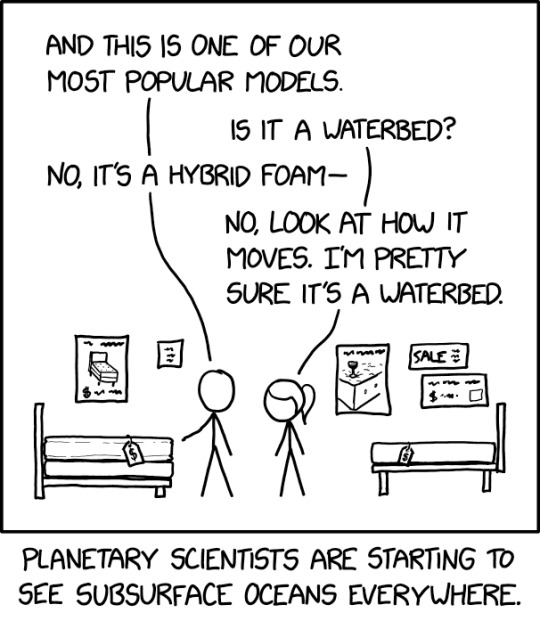
This rumpled fabric at the corner looks like evidence of ongoing tectonic activity.
Planetary Scientist [Explained]
185 notes
·
View notes
Note
which solar system planet is the most creature (tm). mine is jupiter. it has a big eye. also the galilean moons? those are her children your honor!!!
Jupiter IS a top contender for its eye and rock collection (children). Idk if I can pick just one, but I'm tied between–
Earth: has things skittering around on and in it, possibly underwent mitosis (/j) to create its moon
Neptune: also has an eye AND has a weirdly high temperature. Did u know that Neptune gets 60% less sunlight than Uranus yet still has significantly faster planetary winds? And also emits approximately 2.5x as much energy into space as it receives from the sun despite getting so little, as compared to Uranus, which barely gives off energy at all? actually u know what, 3-way tie
Uranus: why's that feller so cold. what's it doing with all the heat. why's its rotational axis on its side like that. is it taking a nap
#honorable mention goes to jupiter's kid europa for its subsurface ocean. u just KNOW its got some manner of beasts swimming around in there#anonymous#ask#planets#space#outer space
6 notes
·
View notes
Text
Methane on the surface of Eris and Makemake do not have the correct isotopic ratio to be formed primordially. The conclusion is that the methane was formed by geochemistry which requires a hot core, which might also make subsurface oceans possible.
0 notes
Link
The Space, Astronomy, and Science Podcast.
SpaceTime Series 27 Episode 19
*Saturn’s Moon Mimas Hides a Watery Secret
Mimas, once known merely as the Death Star look-alike, has revealed a startling secret. New research from the Cassini mission data shows that beneath its icy facade, this diminutive moon harbors a youthful subsurface ocean. Only 400 kilometers wide, Mimas's aquatic interior is geologically green, estimated to be a mere 5 to 15 million years old.
*Juno's Daring Dance with the Volcanic Io
NASA's Juno spacecraft has just grazed past the fiery surface of Io, Jupiter's most volcanic moon. During its intimate encounter, Juno captured the moon's volcanic fury, with plumes reaching into the darkness of space. This mission seeks to uncover whether Io's volcanic vigor stems from a molten heart—an ocean of magma beneath its crust.
*Cold Origins of Organic Compounds in Space
A groundbreaking study has found that certain organic compounds, like those in asteroids, might have originated in the frigid expanses of interstellar space. This challenges the prevailing belief that such compounds could only form near the heat of stars, opening new doors in our quest to understand the chemistry of life beyond Earth.
*The Berlin Meteorite: A Rare Visitor Decoded
After a fiery descent witnessed across central Europe, fragments of an asteroid that landed near Berlin have been identified as a rare type of chondrite known as an orbrite. This discovery provides a unique glimpse into the diverse materials that wander our cosmic neighborhood.
Join us as we delve into these discoveries and more on SpaceTime with Stuart Gary.
https://spacetimewithstuartgary.com https://bitesz.com
Listen to SpaceTime on your favorite podcast app with our universal listen link: https://spacetimewithstuartgary.com/listen and access show links via https://linktr.ee/biteszHQ
For more SpaceTime and show links: https://linktr.ee/biteszHQ
For more space and astronomy podcasts visit our HQ at https://bitesz.com
Your support is needed... **Support SpaceTime with Stuart Gary: Be Part of Our Cosmic Journey!** SpaceTime is fueled by passion, not big corporations or grants. We're on a mission to become 100% listener-supported, allowing us to focus solely on bringing you riveting space stories without the interruption of ads. **Here's where you shine:** Help us soar to our goal of 1,000 subscribers! Whether it's just $1 or more, every contribution propels us closer to a universe of ad-free content. **Elevate Your Experience:** By joining our cosmic family at the $5 tier, you'll unlock: - Over 350 commercial-free, triple episode editions. - Exclusive extended interviews. - Early access to new episodes every Monday. Dive in with a month's free trial on Supercast and discover the universe of rewards waiting for you! [Join the Journey with SpaceTime](https://bitesznetwork.supercast.tech/) [Learn More About Us](https://spacetimewithstuartgary.com) Together, let's explore the cosmos without limits!
#space #astronomy #science #spacetimewithstuartgary #podcast #Mimas #Juno #Io #OrganicCompounds #Asteroid #BerlinMeteorite
#callisto#cassini#data#death#enceladus#europa#ganymede#juno#life#mimas#mission#moon#moons#ocean#of#origins#saturn's#shaped#star#subsurface
0 notes
Text

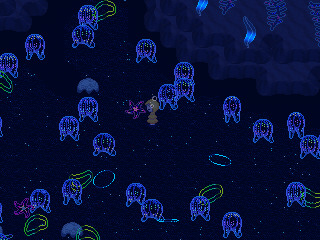
Ocean Subsurface, I love the starfish here
1 note
·
View note
Text
The Best News of Last Week - August 21, 2023
🌊 - Discover the Ocean's Hidden Gem Deep down in the Pacific
1. Massachusetts passed a millionaire's tax. Now, the revenue is paying for free public school lunches.

Every kid in Massachusetts will get a free lunch, paid for by proceeds from a new state tax on millionaires.
A new 4% tax on the state's wealthiest residents will account for $1 billion of the state's $56 billion fiscal budget for 2024, according to state documents. A portion of those funds will be used to provide all public-school students with free weekday meals, according to State House News Service.
2. Plant-based filter removes up to 99.9% of microplastics from water

Researchers may have found an effective, green way to remove microplastics from our water using readily available plant materials. Their device was found to capture up to 99.9% of a wide variety of microplastics known to pose a health risk to humans.
3. Scientists Find A Whole New Ecosystem Hiding Beneath Earth's Seafloor
youtube
Most recently, aquanauts on board a vessel from the Schmidt Ocean Institute used an underwater robot to turn over slabs of volcanic crust in the deep, dark Pacific. Underneath the seafloor of this well-studied site, the international team of researchers found veins of subsurface fluids swimming with life that has never been seen before.
It's a whole new world we didn't know existed.
4. How solar has exploded in the US in just a year

Solar and storage companies have announced over $100 billion in private sector investments in the US since the passage of the Inflation Reduction Act (IRA) a year ago, according to a new analysis released today by the Solar Energy Industries Association (SEIA).
Since President Joe Biden signed the IRA in August 2022, 51 solar factories have been announced or expanded in the US.
5. Researchers have identified a new pack of endangered gray wolves in California

A new pack of gray wolves has shown up in California’s Sierra Nevada, several hundred miles away from any other known population of the endangered species, wildlife officials announced Friday.
It’s a discovery to make researchers howl with delight, given that the native species was hunted to extinction in California in the 1920s. Only in the past decade or so have a few gray wolves wandered back into the state from out-of-state packs.
6. Record-Breaking Cleanup: 25,000 Pounds of Trash Removed from Pacific Garbage Patch

Ocean cleanup crews have fished out the most trash ever taken from one of the largest garbage patches in the world.
The Ocean Cleanup, a nonprofit environmental engineering organization, saw its largest extraction earlier this month by removing about 25,000 pounds of trash from the Great Pacific Garbage Patch, Alex Tobin, head of public relations and media for the organization
7. The Inflation Reduction Act Took U.S. Climate Action Global

The U.S. Inflation Reduction Act (IRA) aimed to promote clean energy investments in the U.S. and globally. In its first year, the IRA successfully spurred other nations to develop competitive climate plans.
Clean energy projects in 44 U.S. states driven by the IRA have generated over 170,600 jobs and $278 billion in investments, aligning with Paris Agreement goals.
---
That's it for this week :)
This newsletter will always be free. If you liked this post you can support me with a small kofi donation here:
Buy me a coffee ❤️
Also don’t forget to reblog this post with your friends.
1K notes
·
View notes
Photo

2024 March 29
Galileo's Europa
Image Credit: NASA, JPL-Caltech, SETI Institute, Cynthia Phillips, Marty Valenti
Explanation: Looping through the Jovian system in the late 1990s, the Galileo spacecraft recorded stunning views of Europa and uncovered evidence that the moon's icy surface likely hides a deep, global ocean. Galileo's Europa image data has been remastered here, with improved calibrations to produce a color image approximating what the human eye might see. Europa's long curving fractures hint at the subsurface liquid water. The tidal flexing the large moon experiences in its elliptical orbit around Jupiter supplies the energy to keep the ocean liquid. But more tantalizing is the possibility that even in the absence of sunlight that process could also supply the energy to support life, making Europa one of the best places to look for life beyond Earth. The Juno spacecraft currently in Jovian orbit has also made repeated flybys of the water world, returning images along with data exploring Europa's habitability. This October will see the launch of the NASA's Europa Clipper on a voyage of exploration. The spacecraft will make nearly 50 flybys, approaching to within 25 kilometers of Europa's icy surface.
∞ Source: apod.nasa.gov/apod/ap240329.html
91 notes
·
View notes
Text
I'm not including Earth's moon because I think we can agree that would result in a Moonsweep. But the Solar System is home to 685 other known moons that are also weird and wonderful!
Pictures and fun facts of all these moons below the read more!

Phobos. The larger of Mars's two moons, it is getting closer to Mars at a rate of 1.8 m/year. It will either crash into the planet or break apart, forming a ring!

Deimos. Tiny little moon with loose sediment possibly 100 m thick on its surface.

Europa. One of Jupiter's four Galilean moons, so-called because they were discovered by Galileo. This moon has an ocean underneath the icy surface and may be one of the best places to search for extraterrestrial life!

Callisto. One of Jupiter's four Galilean moons. Used to be considered one of the most boring moons, but more recent evidence suggests that it has an ocean beneath its icy/rocky surface!
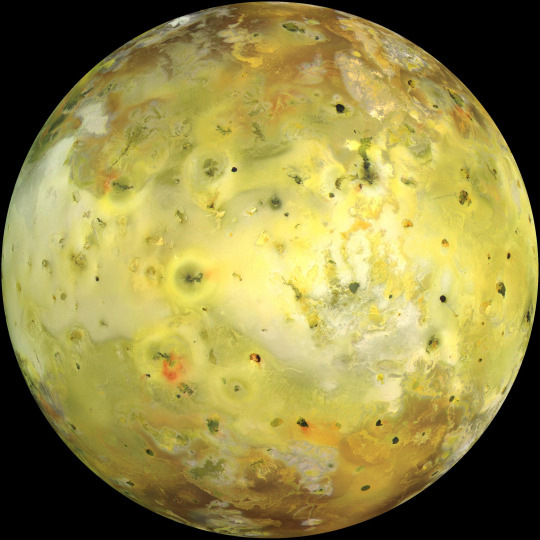
Io. One of Jupiter's four Galilean moons. The most volcanically-active body in the Solar System!
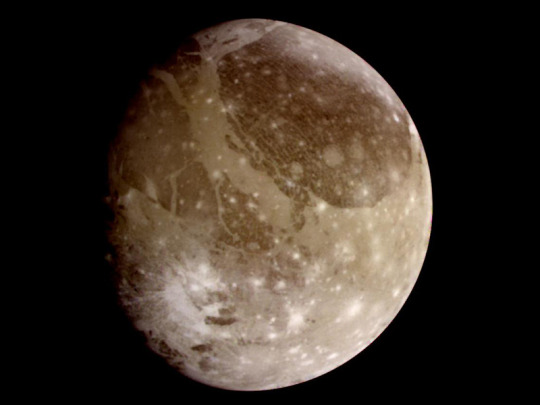
Ganymede. One of Jupiter's four Galilean moons. The largest moon in the Solar System and the only known one with its own magnetic field! Also thought to have a subsurface ocean.

Titan. The only moon with a substantial atmosphere, and the only known body besides Earth with present-day liquid on the surface! Titan has lakes, rivers, and seas made of liquid methane and ethane.

Enceladus. A tiny moon, but a very scientifically interesting one! It has a liquid water ocean beneath its icy shell, and it appears to have vents where plumes of water shoot out into space. Also thought to be one of the best places to search for life.
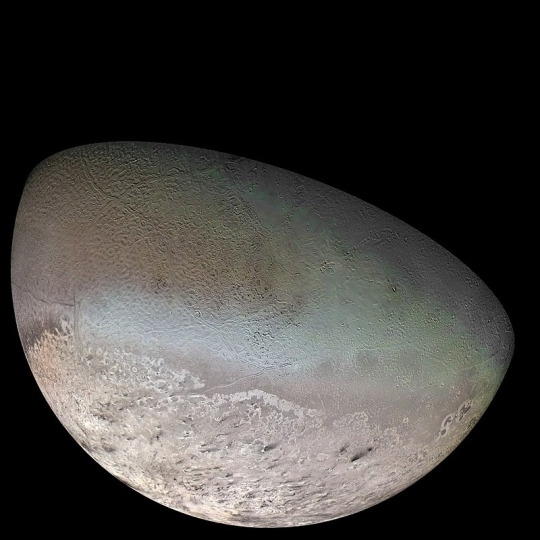
Triton. Neptune's largest moon. One of the few geologically-active moons in the Solar System with a surface made of nitrogen ice!
All photos from NASA.
[Image ID: 9 photos showing the moons Phobos, Deimos, Europa, Callisto, Io, Ganymede, Titan, Enceladus, and Triton. end ID]
#space#science#geology#moon#this was fun to make#our solar system is an incredible place!#i love planetary science so much
698 notes
·
View notes
Text
My headcanons for the location of the Third House because this is what my brain decided to focus on tonight:
References to tridents (the Tridentarii, Babs' triple bladed knife) probably place Ida on or near Neptune.
Names in the Third royal line represent purple flowers (Ianthe, Violabeth), possibly a reference to the myth of Clytie, an oceanid nymph.
Rather than living in some installation on a gaseous planet, it's possible a colony was set up on Triton, Neptune's largest moon.
Triton has a retrograde orbit, indicating that it was likely captured rather than formed in the planet's accretion disk. This means it would have been subject to significant tidal forces which would contribute to warming.
It also has a solid core, which would provide radiogenic heating.
Triton is tidally locked to Neptune, meaning that the same side of the moon always faces the planet. This means that its poles experience seasons as Neptune orbits the sun every 165 years, with one pole remaining in the sun for half the orbital period.
This constant sun exposure plus a greenhouse effect from nitrogen ice would trap in additional heat.
These various heating sources and cryovolcanic activity point to the likelihood of a subsurface water ocean.
In conclusion, civilization on Ida may take the form of a series of subaquatic installations where the inhabitants migrate between the two poles every ~80 years to preserve heat, which fits with both the ocean imagery and the purple flower/heliotrope imagery of turning to face the sun!
65 notes
·
View notes
Text
As far as we know, life needs water.
Due to this simple truth, astronomers and astrobiologists have naturally focused their efforts on identifying exoplanets that might harbor liquid oceans. Water in its liquid form can exist on a planet's surface, where direct heat from its host star can keep the substance from freezing — but it can also exist beneath a planet's surface, where internal sources of heat can sustain flowing, subsurface oceans.
In a new analysis, NASA has revealed that 17 discovered exoplanets could house subsurface oceans buried below thick sheets of ice. These worlds, much like the icy moons of Jupiter, could therefore be promising places to search for biosignatures — chemical signs of life.
Continue Reading.
67 notes
·
View notes
Photo

Galileo's Europa : Looping through the Jovian system in the late 1990s, the Galileo spacecraft recorded stunning views of Europa and uncovered evidence that the moon's icy surface likely hides a deep, global ocean. Galileo's Europa image data has been remastered here, with improved calibrations to produce a color image approximating what the human eye might see. Europa's long curving fractures hint at the subsurface liquid water. The tidal flexing the large moon experiences in its elliptical orbit around Jupiter supplies the energy to keep the ocean liquid. But more tantalizing is the possibility that even in the absence of sunlight that process could also supply the energy to support life, making Europa one of the best places to look for life beyond Earth. What kind of life could thrive in a deep, dark, subsurface ocean? Consider planet Earth's own extreme shrimp. via NASA
630 notes
·
View notes
Text
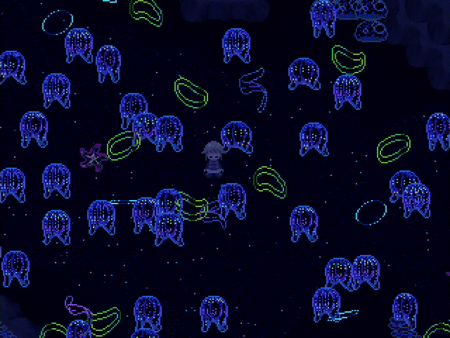
Yume 2kki - Ocean Subsurface
50 notes
·
View notes
Text
Residual and radioactive heat may make some Kuiper Belt dwarf planets geologically active.
0 notes
Text
i was discovered deep in the subsurface oceans of europa
37 notes
·
View notes
Text
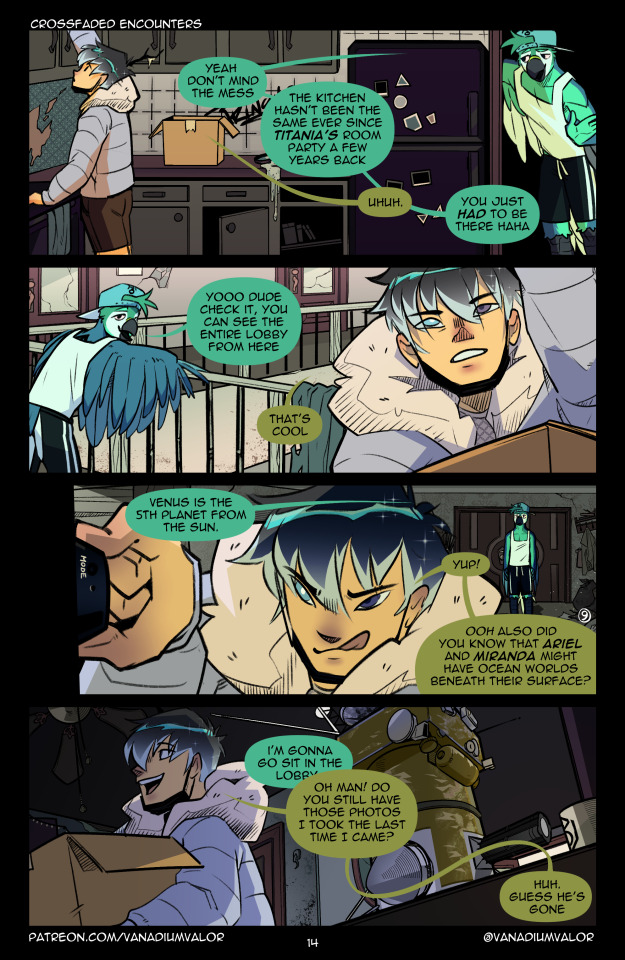
[☀️SOLAR HOUSE | Chapter Two | Pg. 14]
Crossfaded Encounters
This furry webcomic / comic about the solar system updates every Tuesday!
Previous Page
[9] Because both moons have undergone tectonism recently, Ariel and Miranda may have subsurface oceans. The two moons are also similar to Enceladus, which the Cassini-Huygens later proved to have an ocean.
Source: “The NASA Roadmap to Ocean Worlds”, Hendrix, Hurford, et al.
#personification#gijinka#astronomy#space#furry#furry art#sfw furry#digitalart#oc#originalcharacter#solarhouse#character design#mwf art#mwf#milky way fandom#planet#comic#earth#uranus#human#avian#bird#macaw
37 notes
·
View notes
Text
Kraken Mare
And ANOTHER thing, from TWAB:
And we’re not kidding when we say we’re going under the sea…here’s a glimpse of one of the places you’ll be headed in Season of the Deep:

There will be actual underwater sections! That makes me insane right away.
Also, this is a Golden Age facility. Why is it at the bottom of the ocean? Or in some sort of a cave? Well, we don't know, but we do know that they were investigating Titan's ocean(s) back in the Golden Age. Perfect time to talk about it!
I cannot recommend Last Days on Kraken Mare enough as a lore book, as it's not only relevant right now, but it's one of the only true and direct accounts of the Collapse starting and the devastation it brought. Last two pages deal with a scientist who was doing research on life in the ocean.
In The Water Sun, Part I, the scientist Maury Yamashita is diving to open a pen with creatures he calls swarmers in order to save them as the Collapse is starting. They were native to Titan and, from the way he talks, we know they weren't originally in the place where their cage is at.
Sorry, Mia, he thinks. It has to be worth my life, or I'm worth more than them, and I know I'm not. I put them there. It's my job to let them out.
He's always loved the stupid little swarmers.
When Titan gets pulled and released from the gravity attack, it causes a massive disturbance not just on the methane sea, but also in the ice shelf and subsurface ocean; yes, Titan has another, non-methane ocean under the surface:
"The tidal pull. The ghost mass. It just… left. The moon is collapsing back to spheroid shape. I'm detecting primary waves in the subsurface ocean—it's a quake. It's a quake! Maury, get away from the substructure! Get clear!"
Maury imagines 60-plus meters of bulging moon, Titan's mass hauled up into a teardrop pointed at the sky—suddenly released. Smashing and scraping and grinding back into equilibrium. Cracks in the ice spewing plumes of water and ammonia. Continent-sized shelves slamming and rebounding and calving like bergs. The whole vast inner ocean sloshing back into its shape.
Maury gets tossed and tumbled in the methane ocean and has a fear that, with the ice cracking, he will fall over "into the abyss," meaning through the ice shelf:
"The swarmers," he says, and he jettisons his buoyancy tanks.
Without that lift he is so much denser than the bad water around him that he plunges like a skydiver toward the cross brace below, where the swarmer pen is anchored. Titan's gravity may be gentle, but even gentle acceleration adds up. He hits hard, and the spinmetal surface blasts the air out of his lungs. He gasps and gags. Scrabbles for purchase before he slides off and falls into the abyss. He's going over—no! No! He is not going over! He will not fall!
In Part II, Maury saves himself with his hi-tech suit and finally reaches his swarmers. He gives us a description!
The swarmers seethe and pulsate in the perforated plastic sac. Not Titan's highest life, nor its lowest, they hive across the icy sea-bottom in enormous braided patterns that speak to Maury of intelligence. Not individually—not even at the hive level—but some kind of vast concert, conducted, perhaps, by leviathans down beneath the ice shell, communicating across the barrier by magnetic whisper that the swarmers receive via organic SQUIDs. An ecology spanning methane life and water-ammonia life. Why? How?
This is so cool! Not only does he describe the creatures, he also tells us that there's also life under the ice shelf and he calls that life "leviathans." This also means that there are probably ways to go through the ice which allowed them to study those creatures beneath the ice shelf. Maybe caves? Maybe the Golden Age facility is beneath the ice shelf. Not entirely likely, but still! Maury's theory is that the swarmers are somehow connected to those leviathans beneath the ice and that all life on Titan is a connected ecology of lifeforms that live in wastly different biomes.
These creatures predate the Traveler's arrival, which we know from the writing of Clovis Bray who specified that Titan, Europa and Enceladus were never terraformed:
Did the Traveler bypass Europa and Titan and Enceladus out of respect for their native life?
Or was it afraid to touch the things pulsating below the ice?
This is interesting now in context of the information that an "enemy of the Witness" is on Titan. Did the Traveler bypass the life or has that life always been a part of the Traveler as enemies of the being that seeks to destroy it? Or is it something more specific, like the Leviathan from the Fundament? Vibrating to find out.
Maury thinks about how he brought the swarmers up from the bottom and that he can't bear to see them all die because he captured them so he hurries to open their pen. Once he does, they all skitter back to the bottom.
The polymer shreds and the swarmers scatter, their tiny bodies siphoning liquid methane as they pump down and away. Safe. Safe.
And then:
The quake hits.
A hundred and fifty meters below, the icy basis of Kraken Mare rolls like liquid. The arcologies answer the low geological wail with a cacophony of groans and shrieks, joints flexing, tethers snapping taut, substructures soaking up unthinkable mechanical energy, trying to keep anything from—
Breaking.
Maury falls to the bottom from the blast and gets told to move it back up because the wave is coming. An ice shelf completely collapsed into Kraken Mare and the wave is going to be catastrophic and he has to reach the surface. Which he does! He manages not only to reach the surface, but also to fly out of the water with really cool Golden Age tech suit:
He makes it to the surface. He's up there in plenty of time. He can even see Dome 1, still intact, though a lot of the surrounding rigging is damaged. One of the creepy Exo soldiers stands outside, beckoning to him with a laser dazzle, guiding him in.
Maury opens his suit wings to their full membranous span. A single mighty stroke of paramuscle cups the air and hauls him up out of the sea. He's aloft! Titan air is thick, and Titan gravity is light, and like a huge bat he can fly. He puts his head down and starts building altitude, headed towards the beckoning Exo.
Alas, it's not enough. What follows is one of the best descriptions of just how utterly cataclysmic the situation was:
First, he sees the supercarrier, tragically buoyant, tragically light, built for seas with gentle one-meter tides but now riding the greatest wave Titan has ever seen, directly into Dome 2's crippled understructure. In 152 kilopascals of air pressure, the pandemonium sound of the collision has the gut-mulching power of a rocket booster.
The entire arcology collapses down onto the ship, into the sea.
Then he blinks past the devastation and recognizes the sheer scale, the utter speed, the complete imminence of that unthinkable methane wave coming down at him.
"Oh, man," he says.
This is easily in my top 5 lore books in all of Destiny. Honestly read the whole Last Days on Kraken Mare. But this final bit is so good. It's incredibly good. It was the first direct description of the type of devastation brought on by the Collapse and how incredibly impossible it is to survive it. No weapons fired, no armies involved, nothing. The moon was just squashed and then released, and gravity did the rest. Nothing short of immediately leaving the planet can help you.
It was also the first unambiguous proof that what happened on the Fundament was because of the Darkness. Last Days on Kraken Mare released in Season of Undying which was the first season of Shadowkeep. We'll wait for The Witch Queen to see the Witness admitting that it caused the God Wave of the Fundament and blamed it on the Traveler to deceive the Hive siblings, but Last Days on Kraken Mare was our first direct indication about it, as well as insight into how it's done. Our own God Wave that started the Collapse.
It's very cool that two celestial bodies with some sort of underwater leviathans linked to the Traveler were hit by cataclysmic waves to destroy them. I guess, it's the easiest thing to do to a water planet like that, but still an interesting parallel, especially now that we're very specifically going to be looking for a creature that's apparently personally an "enemy of the Witness." This lore book also confirms that the existence of some massive creatures in Titan's oceans predates the arrival of the Traveler.
So much text about that one picture, but to see a Golden Age facility at the bottom of the ocean is such a sight. I'm hoping for more Golden Age information in the next season and more about the research that went down on Titan, especially research into its life forms.
Interestingly enough, there was another important research being done on Titan, though it wasn't about Titan. But this research was the subject of the rest of the lore book and has relevance to the Collapse, as well as Ishtar and Braytech. The scientist in question was Shanice Pell who fled to Titan to build an interstellar probe. She wanted to send it to explore the universe outside of the solar system.
Both Ishtar and Braytech were interfering with her work so she went to Titan which was independent. Did Ishtar and Braytech interfere because they were also doing research on interstellar space and travel? Did they want to stop someone independent from learning more, especially about the strange anomalies in space that seemed to be coming over?
Very likely, because Shanice's probe discovered the anomaly as well. Initial data from the probe made no sense, obviously because it's paracausal, the anomaly being the Black Fleet. She continued to research and figured something is off and when she figured it out (as much as she could, we aren't sure how close she came to understanding it), she decided that her data must get out. Unfortunately, this is where Last Days on Kraken Mare happen; Shanice was being evacuated, but her evacuation was intercepted by Braytech Exos who came to aprehend her and stop her from publicising her research. She boarded the evacuation shuttle which was then shot down by Rasputin's warsat to stop her escape.
Ultimately, she died in vain. This was literally at the start of the Collapse so even if she had escaped, her data wouldn't have done much. There was no way to stop or survive the Collapse at this point. Her data may have alerted the people at the end, but nothing could've been done with it.
But it's super interesting how many stories are converging on Titan, especially now that we know more about Ishtar and Braytech and their involvement with predictive AIs, exodus projects and all the other stuff they did which ultimately led to Neomuna.
It's also been brought to my attention that the author of Last Days on Kraken Mare, Seth Dickinson, previously said that he wrote three times as much content about Titan. Titan was apparently supposed to be relevant in Forsaken, but there was not enough time in the existing crunch to get it done so it never got implemented. But he wrote a lot about it, and a third of his writing got implemented as Last Days on Kraken Mare in Shadowkeep. I'm sincerely hoping we'll see the rest of his writing about Titan in Season of the Deep. His comment:
It was supposed to be Titan content back in Forsaken but there wasn't enough time during crunch to get it all localized and hooked up. Even the chapters available in Shadowkeep are only about a third of the whole thing.
I'm looking at Bungie with the biggest eyes and hoping the rest gets released.
ONE MORE thing before we go and it's just a nice little detail about Last Days on Kraken Mare as a lore book; its "chapters" are named after various eschatological beliefs of different cultures aka beliefs about various ends of the world. Namely, The Sixth Seal from the Biblical Revelation; Tenth Avatar and Kalki's Burning Sword are from Hindu beliefs of Kalki being the Tenth Avatar of Vishnu who will appear to end the world; and the name of the final two chapters, The Water Sun, is from the Aztec myth of the Five Suns, or eras, in which each era ends with some sort of a catastrophe. The Fourth Sun (also known as Water Sun) ends with a great flood.
#destiny 2#season of the deep#titan#lore vibing#long post#listen. i've been re-reading this lore book for the past 4 years to live vicariously through it with the lack of titan content#getting something. ANYTHING. about titan now is a personal gift to me in particular. i've wanted it since vanilla#to know they had stuff planned but had to scrap it is so painful to me. and then they never had time to go back to it#perhaps this is the content that was supposed to drop + obviously updated stuff that's relevant to us now#i'm getting dangerously overhyped for this but i can't help it#fave planet fave vibes fave apocalyptic story. so so so so glad it's returning and that we're getting so (hehe) deep into it#we'll see titan's ocean..... man.
121 notes
·
View notes